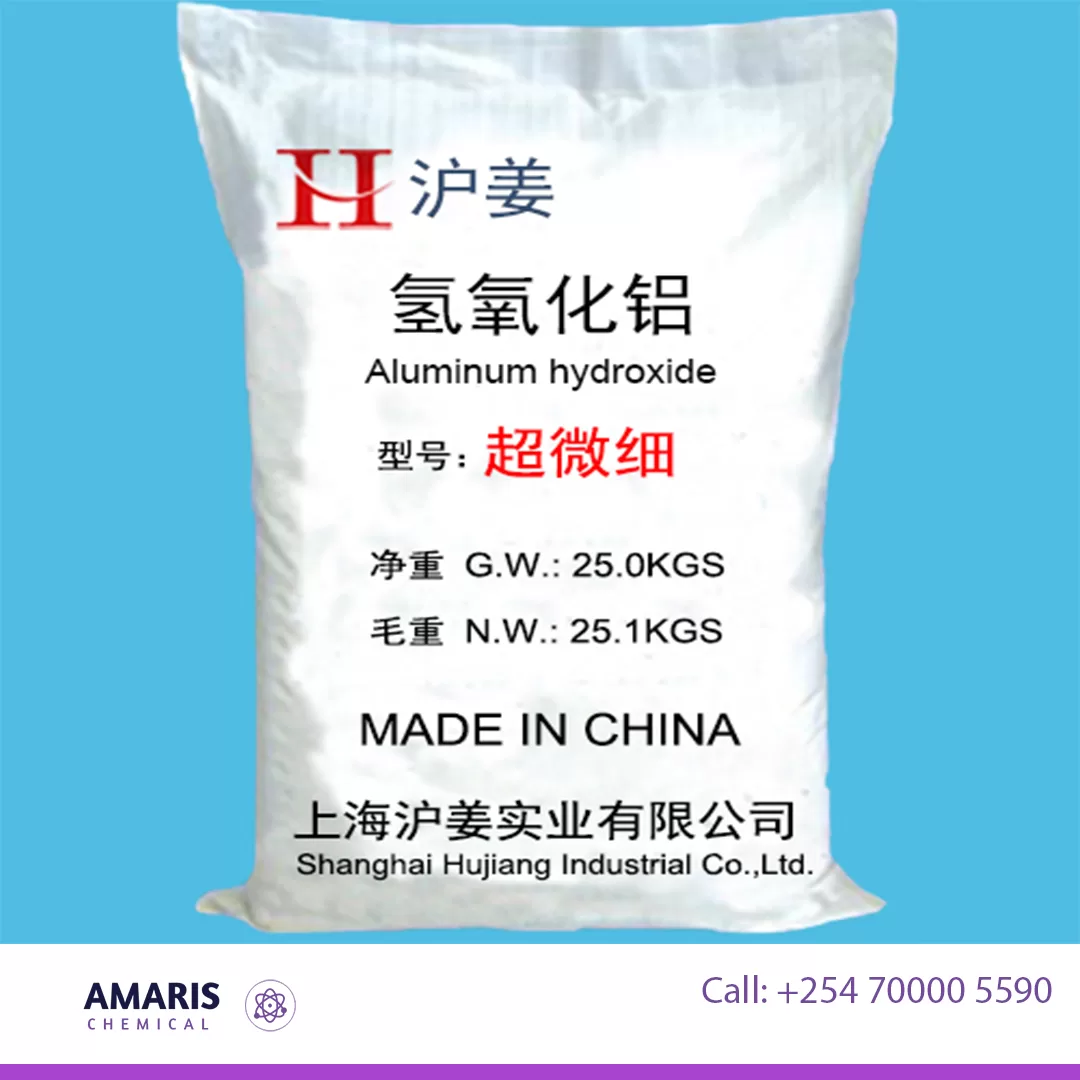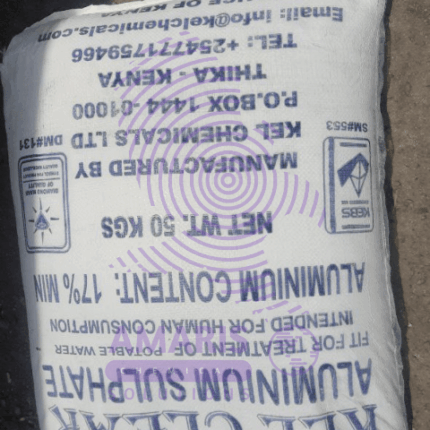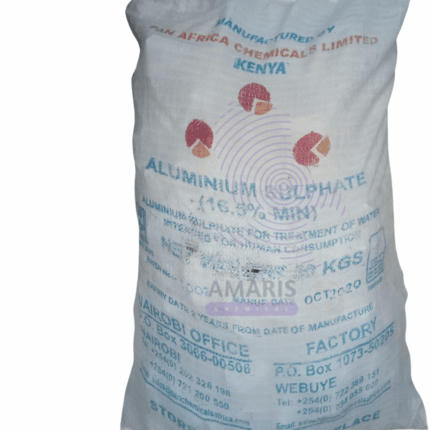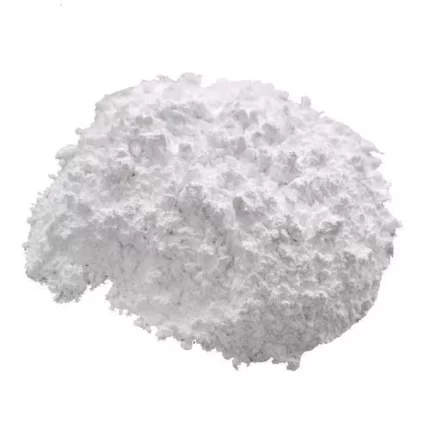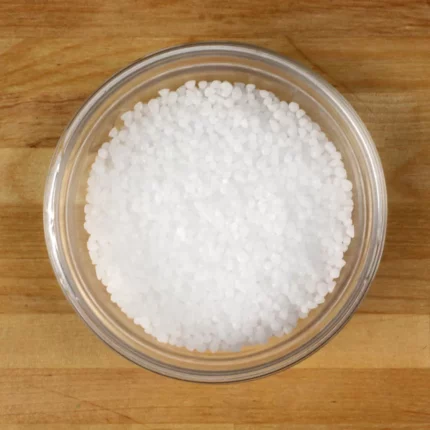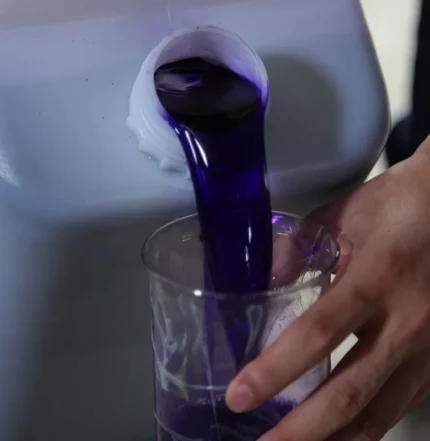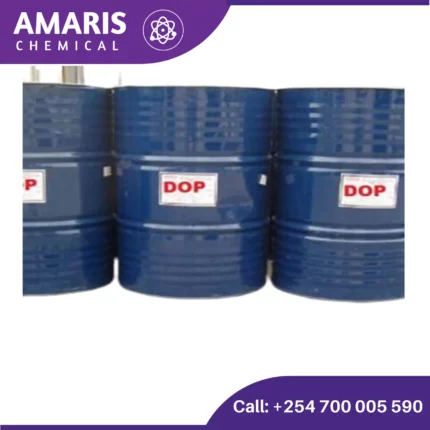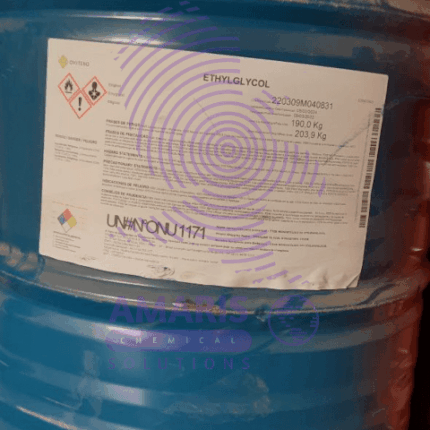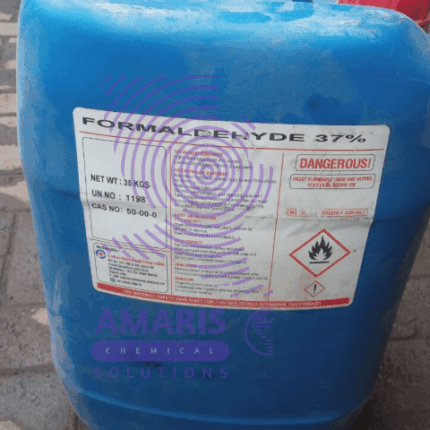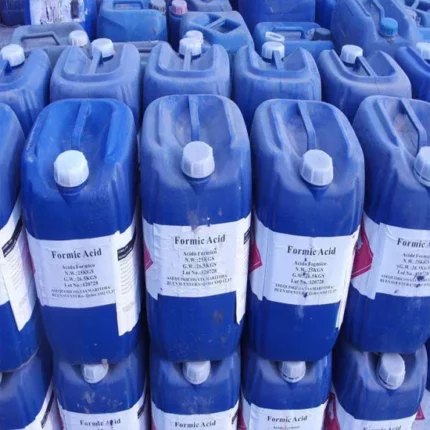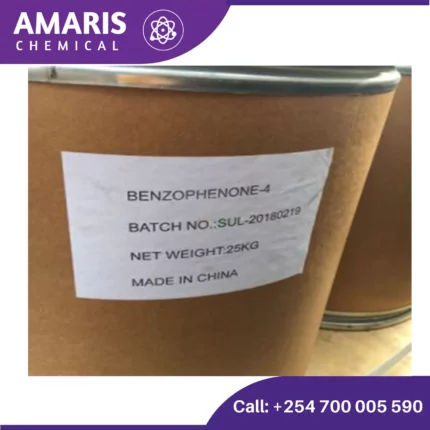
Methoxy benzophenone Sulfonic Acid
$39,000.00 Original price was: $39,000.00.$38,000.00Current price is: $38,000.00.
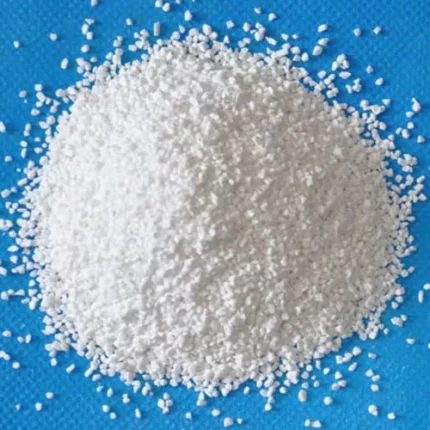
Sodium dichloroisocyanurate (C3N3O3Cl2Na)
$8,500.00 Original price was: $8,500.00.$8,300.00Current price is: $8,300.00.
Aluminum hydroxide
$5,500.00 Original price was: $5,500.00.$5,400.00Current price is: $5,400.00.
Whatsapp Order
Aluminium hydroxide is a chemical compound with the formula Al(OH)3. It is an inorganic compound that is commonly used as an antacid to neutralize excess stomach acid, as well as a component in the manufacture of various products, such as ceramics, paper, and cosmetics. It is a white, powdery substance that is insoluble in water and has a low toxicity. When heated, it decomposes to produce aluminium oxide, or alumina, which is used in the production of aluminium metal.
SKU:
ACS14332CHEM0
Category: OTHERS
Description
Aluminium hydroxide
- Antacid: Aluminium hydroxide is commonly used as an antacid to neutralize excess stomach acid and provide relief from heartburn, indigestion, and stomach ulcers.
- Water treatment: Aluminium hydroxide is used in water treatment processes to remove impurities and improve the clarity and safety of drinking water.
- Flame retardant: Aluminium hydroxide is used as a flame retardant in plastics, rubber, and textiles, as it releases water vapor when heated, which helps to cool and extinguish flames.
- Filler: Aluminium hydroxide is used as a filler in a variety of materials, including paper, ceramics, and paint, to improve their properties and performance.
- Catalyst: Aluminium hydroxide is used as a catalyst in chemical reactions, particularly in the production of polyolefins, which are used to make a wide range of plastic products.
- Pharmaceutical: Aluminium hydroxide is used as an excipient in pharmaceutical formulations, such as vaccines and antacids, to enhance their stability and effectiveness.
Cosmetics: Aluminium hydroxide is used in cosmetics and personal care products, such as deodorants and antiperspirants, as an absorbent and as a thickening agent.
Related products
Aluminium Sulphate powder (Alum)
Rated 4.98 out of 5
Aluminium sulphate, also known as alum, is a chemical compound made up of aluminium, sulphur and oxygen. It has the chemical formula Al2(SO4)3 and is commonly used in water treatment plants as a coagulant to remove impurities such as suspended particles, organic matter, and bacteria from water.
Alum is a white crystalline substance that dissolves in water to form a colourless solution. It has a variety of other applications, including in the manufacturing of paper, textiles, and in various industrial processes. In addition, alum has medicinal uses as an astringent and as a component of antiperspirants.
Overall, aluminium sulphate or alum is a versatile compound with a range of practical uses in various industries and applications.
Calcium Carbonate (uncoated)
Uncoated calcium carbonate refers to a natural mineral substance that is composed of calcium carbonate without any additional coatings or surface treatments. It is a white, powdery material that is commonly used in various industrial applications, including the manufacture of paper, paints, plastics, and rubber products, as well as in construction, agriculture, and the food and pharmaceutical industries. Uncoated calcium carbonate is typically mined from natural deposits of limestone or chalk and is often ground into fine particles to achieve the desired particle size and purity for specific applications
Ceto Stearyl Alcohol (50:50) 25 kg bag
Cobalt Octoate 10% 200kg Drum
Cobalt octoate is a chemical compound that consists of cobalt ions (Co2+) bound to octoate ions (also known as octanoate ions, C8H15O2-). It is often used as a catalyst in various chemical reactions, particularly those involving the curing of unsaturated polyester resins and the polymerization of vinyl chloride. Cobalt octoate can also be used in the production of coatings, adhesives, and inks.
In its pure form, cobalt octoate appears as a dark blue liquid with a characteristic odor. It is soluble in a variety of organic solvents and is typically sold as a solution in mineral spirits or other solvents. The concentration of cobalt octoate in these solutions can vary depending on the intended use, with concentrations typically ranging from 1% to 12%.
DOP (Dioctyl Phthalate) 200 kg drum
Dioctyl phthalate (DOP) is a clear, colorless liquid with a slightly fruity odor. It is a commonly used industrial chemical and a type of phthalate ester, which is a plasticizer. DOP is often added to plastics, such as polyvinyl chloride (PVC), to make them more flexible and easier to process. It is also used as a solvent and a lubricant in a variety of industrial and consumer applications. However, due to concerns about its potential health and environmental effects, DOP is being replaced by other plasticizers in many applications.
Ethyl Glycol 190 kg Drum
Ethyl glycol, also known as ethylene glycol monethyl ether or 2-ethoxyethanol, is a clear, colorless, and slightly viscous liquid with a mild, sweet odor. It is a solvent commonly used in various industries, such as paints and coatings, cleaning products, and printing inks, as well as in the production of resins, lacquers, and pharmaceuticals. Ethyl glycol has a chemical formula of C4H10O2 and a molecular weight of 90.12 g/mol. It is important to handle ethyl glycol with care, as it can be toxic if ingested, inhaled, or absorbed through the skin
Formalin (Formaldehyde) 35kg
Formaldehyde is a colorless gas with a pungent odor, which is used as a disinfectant, preservative, and in the production of various materials and chemicals.
Formalin is a solution of formaldehyde gas in water, typically containing 37% formaldehyde by volume. It is commonly used as a tissue preservative in biological specimens for medical and research purposes. Formalin is also used in various industrial applications such as manufacturing plastics, resins, and textiles.
Formic Acid 85% 25 kg Jerrycan
Formic acid is a colorless, pungent liquid with a chemical formula of HCOOH. It is the simplest carboxylic acid, naturally occurring in certain fruits and vegetables and in the venom of some ants. It has a wide range of industrial applications as a preservative, antibacterial agent, solvent, and in the production of textiles, leather, rubber, and other materials. It also has some medical applications and is used in organic chemistry reactions as a reducing agent. However, formic acid is highly corrosive and can be dangerous if ingested or inhaled in large quantities.

